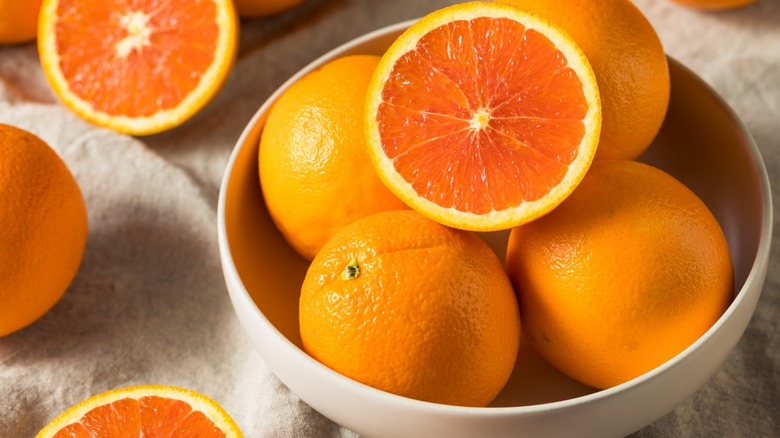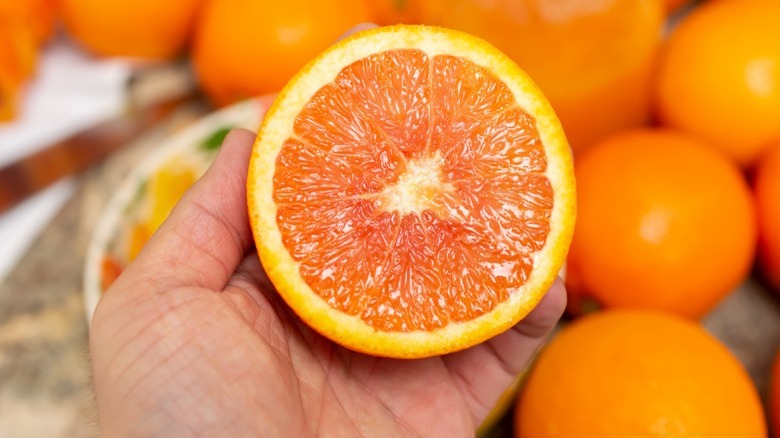What Makes Cara Cara Oranges Unique
The flavor of citrus is universally beloved. People all over the world eat citrus and benefit from this class of fruits' hefty dose of health benefits, according to Science Direct. For most people, vitamin C likely comes to mind when they think about citrus. However, the tangy flesh that lies beneath the fibrous, bitter pith and smooth, thick exterior is full of other nutrients as well, "including B vitamins, potassium, phosphorus, magnesium, and copper," per Healthline. Citrus fruits, ranging from satsuma mandarins to oroblanco grapefruit, also contain fiber and may help prevent kidney stones.
Citrus has vast culinary potential. After all, there's an application for both the inner and outer parts the fruit, USCitrus reported. The zest, which is the outer layer, contains a powerful scent and intense, concentrated flavor, while the flesh stores the juice and has a tangy taste. For whatever reason you require citrus, there is no shortage of unique orange types for your cooking, juicing, and snacking. If you've never tried cara cara oranges, they're the uncommon winter fruit you should experiment with next.
Don't mistake the cara cara orange for a grapefruit
Good chefs knows the power of a good squeeze of citrus to balance out sweet, savory, or fatty flavors and add a "pop" to a variety of dishes, according to US Foods. When winter comes around, they take full advantage of cara cara season. These seedless oranges are in the navel family and can be identified by a belly button-esque dent on the opposite side of the stem, The Spruce Eats explains.
The cara cara orange stands out because its juice possesses a natural sweetness that's rare in other citrus fruits. The juice of regular navel oranges, for example, can become bitter over time, while cara cara juice is delightful to drink or add to other recipes because it's not overly acidic. You can compare it to the perfect lemonade: sweet and tart but not mouth-puckering.
If you cut into a cara cara orange for the first time, you might wonder if you accidentally bought a blood orange. Fear not: The flesh of the cara cara orange has a pinkish hue resembling the shade of grapefruit, so it's commonly confused with blood oranges, which are actually a much deeper red (via MasterClass). Despite their differences, both types of citrus are renowned for their juice. Highlight that signature cara cara flavor by squeezing it into no-bake recipes for orange lovers, like a cranberry orange cheesecake or citrusy Julius.

